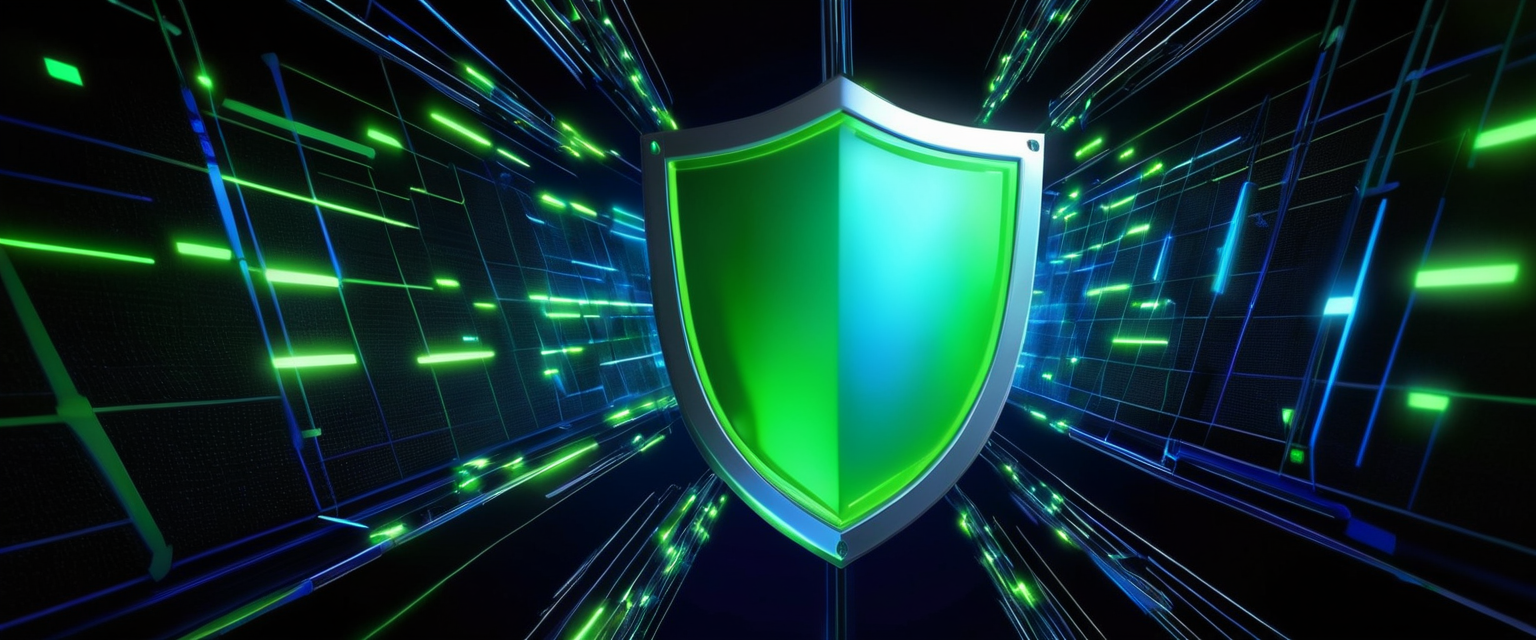
This report presents an extensive analysis of secure software installation and update practices as they relate to comprehensive virus protection against malware and ransomware threats. The contemporary threat landscape presents increasingly sophisticated attack vectors through compromised software downloads, unsafe installation procedures, and delayed patching cycles. By examining pre-installation assessment methodologies, installation security protocols, update management frameworks, and post-installation monitoring strategies, this analysis establishes a layered defense framework that protects systems from malicious software infiltration while maintaining operational functionality and system stability.
Pre-Installation Software Assessment and Verification Protocols
Before any software installation proceeds, organizations and individual users must establish rigorous verification procedures to authenticate the legitimacy and safety of applications. The process of safely acquiring software begins with understanding the fundamental threats associated with software distribution channels and then implementing verification mechanisms to counteract these threats. Software represents one of the most direct pathways through which malware, ransomware, and other malicious code can gain system access, making pre-installation verification critically important to an overall cybersecurity posture.
Vendor Legitimacy and Download Source Verification
The first critical step in software safety involves verifying that software comes from legitimate, authorized sources rather than compromised or fraudulent repositories. When obtaining software, users should prioritize downloading directly from official manufacturer websites or established, reputable software distribution platforms that maintain strict security standards. Official websites of software developers represent the most secure download sources because manufacturers typically implement security measures to protect their distribution infrastructure and verify the integrity of files before making them available. Organizations such as Western Washington University recommend checking several factors before downloading software: whether the application is developed by a reputable vendor, how long the software has been on the market, whether it remains actively supported, and how popular it is within trusted communities. This vendor assessment process helps identify whether a software application represents an established, trustworthy product or an obscure tool that could potentially harbor hidden threats.
Third-party software hosting sites present significant risks because they often lack the security oversight of official sources and may host modified or compromised versions of legitimate applications. Some popular and relatively safe third-party download sites include Ninite, which automatically rejects toolbars and bundled unwanted software, and Softpedia, which maintains a large repository of software and updates most applications daily to ensure users obtain clean, malware-free versions. However, even when using reputable third-party sources, users should understand that these platforms add an intermediary layer to the download chain, which inherently introduces additional risk compared to downloading directly from official developer websites. Major online retailers and application stores such as the Apple App Store and Google Play Store implement rigorous review processes before making applications available to users, providing another relatively secure distribution channel for those using mobile or connected devices.
Code Signing Certificate Verification
An essential verification mechanism involves confirming that downloaded software has been digitally signed by the software developer or publisher using a valid code signing certificate. Code signing certificates serve as digital proof that software originates from a known developer and has not been modified or tampered with since its release. When users download software that lacks proper code signing or that displays warnings about an unknown publisher, this represents a significant red flag that warrants additional investigation before proceeding with installation. Code signing essentially creates a digital shrink wrap for software, equivalent to the plastic wrapping on physical media that assures consumers the product has not been altered since leaving the manufacturer.
Microsoft and other operating system vendors check code signing certificates during application download and installation, triggering warnings when users attempt to install unsigned or improperly signed applications. These warnings exist to alert users that they are about to install software without cryptographic verification of its origin or integrity. Users should treat these warnings seriously rather than dismissing them without investigation. To verify that a code signing certificate installation is valid, users can navigate to their browser’s certificate management area or operating system security settings and confirm that the certificate corresponds to the application publisher and has not expired. Organizations can implement policies that automatically block installation of unsigned applications or applications signed by untrusted developers, creating a technical control that prevents users from accidentally installing potentially malicious software.
File Hash and Integrity Verification
Another verification mechanism involves confirming that downloaded files match the cryptographic hashes published by the software vendor. Cryptographic hashing, typically using SHA-256 or similar algorithms, creates a unique digital fingerprint of a file based on its contents. When attackers intercept downloads or compromise distribution servers, the resulting modified files will produce different hash values than the legitimate files. Organizations and security-conscious users can verify downloaded files by computing their hash values and comparing them against official hashes published by the software vendor. Some software vendors provide hash values on their download pages, though this practice remains inconsistently implemented across the software industry.
Tools and utilities exist to compute and verify file hashes, including command-line utilities and graphical applications designed for this purpose. Windows users can use built-in PowerShell commands to compute SHA-256 hashes of downloaded files, while macOS and Linux users typically have similar tools available through their operating systems. The verification process, while requiring additional time, provides cryptographic assurance that downloaded files have not been modified during transit or while stored on distribution servers. For sensitive applications or in high-security environments, implementing hash verification as a standard practice significantly reduces the risk of inadvertently installing compromised software.
Reputation Analysis and Threat Detection
Beyond verification of signatures and hashes, security-conscious users and organizations should analyze the reputation of downloaded applications using threat detection services such as VirusTotal, which scans files against numerous antivirus and anti-malware engines to identify known threats. VirusTotal represents a free online service where users can upload files for scanning or query existing reputation data for files previously submitted. Submitting a downloaded executable or installer to VirusTotal before installation allows users to benefit from the collective threat detection capabilities of multiple security vendors, increasing the probability of identifying malicious software that individual antivirus products might miss.
In addition to VirusTotal, users should examine the download source’s reputation through security information from their operating system. Microsoft Defender SmartScreen protects against phishing and malware by checking downloaded files against a list of reported malicious software sites and programs known to be unsafe, displaying warnings when attempting to download or execute suspicious files. Similarly, browsers such as Google Chrome and Mozilla Firefox implement download protection mechanisms that alert users before opening potentially dangerous files. Organizations often invest in comprehensive endpoint security solutions that provide real-time reputation analysis of downloaded files, flagging suspicious applications before users execute them.
Secure Installation Practices and System Privilege Management
Once software has been verified as legitimate and safe, the actual installation process must be conducted using security best practices that minimize the risk of malicious code gaining system-level privileges. The installation process represents a critical moment when applications request elevated permissions to modify system files, install drivers, and access sensitive system resources. Proper privilege management during installation ensures that applications receive only the permissions necessary for their legitimate operation and prevents malicious code from gaining excessive system access.
User Account Control and Installation Privileges
User Account Control (UAC) represents a fundamental Windows security feature designed to protect the operating system from unauthorized changes by requiring explicit user approval for operations that require administrator-level permissions. When users attempt to install software that requires administrative privileges, UAC triggers a consent or credential prompt that alerts the user that a privileged operation is about to occur, providing an opportunity to approve or deny the requested action. This mechanism significantly reduces the risk of malware silently installing itself with administrator privileges, because malicious code cannot bypass UAC elevation prompts without explicit user approval.
UAC operates on a principle of integrity levels and privilege segregation, where applications launched using a standard user token inherit standard user level permissions rather than full administrator privileges. When a standard user attempts an action requiring administrator privileges, such as installing software, UAC triggers a consent prompt requesting the user to confirm the action. For administrator accounts, UAC creates two separate access tokens: a standard user access token and an administrator access token. The administrator typically uses the standard user token for normal operations and only elevates to the administrator token when necessary, significantly reducing the exposure of administrator privileges to potential malicious code. This design approach, known as the principle of least privilege, ensures that most applications operate with minimal system privileges, limiting the damage malicious code could inflict if vulnerabilities were successfully exploited.
Users should configure UAC to remain enabled at its default settings rather than disabling it to avoid installation warnings or prompts. Disabling UAC significantly increases the attack surface of Windows systems by allowing any code to execute with administrator privileges without user approval. Organizations implementing strong security postures maintain UAC at maximum effectiveness levels and combine it with User Account Control settings that require credential entry rather than simple consent prompts for elevated operations.
Application Whitelisting and Control Policies
Application allowlisting, also referred to as application whitelisting, represents a security approach that permits only pre-approved applications to execute on a system, blocking all other applications by default. This approach contrasts with traditional blacklisting or denylisting approaches that attempt to block known malicious applications while allowing everything else to run. By implementing application allowlisting policies, organizations can prevent unauthorized software installation and execution, including malware, ransomware, and unauthorized applications that users might install without authorization.
Windows provides application control mechanisms through features such as AppLocker, which allows administrators to create rules that specify which applications and scripts users can execute based on file attributes such as publisher name, product name, file version, or file hash. AppLocker enables organizations to define rules based on characteristics that persist across application updates, such as the digital signature of the publisher, making policies more maintainable than hash-based approaches that would break whenever software updates were released. Rules can specify exceptions, allowing administrators to create policies that allow most applications but block specific ones. For example, administrators could create a rule allowing all Windows binaries to execute but explicitly blocking the Registry Editor or other administrative tools from being used by standard users.
Windows 11 introduced Smart App Control, a cloud-powered application control feature designed for consumers and small businesses that blocks unsigned code or code that the Microsoft Intelligent Security Graph predicts might be unsafe. Smart App Control begins in evaluation mode on new Windows 11 installations and, if the user chooses to enable it, switches to enforcement mode where it blocks execution of code that fails its security assessment. This approach provides protection against zero-day malware and other unknown threats that traditional signature-based antivirus software might miss, because it assesses code safety based on cloud intelligence rather than only known threats.
Protect Your Digital Life with Activate Security
Get 14 powerful security tools in one comprehensive suite. VPN, antivirus, password manager, dark web monitoring, and more.
Get Protected Now
Sandboxing and Isolated Installation Testing
Organizations with high security requirements often implement sandboxing techniques to test software in an isolated environment before deploying it to production systems. A sandbox environment represents an isolated computing environment where applications, software, or code changes can be executed without affecting the live production system or other applications. Sandboxing proves particularly valuable for testing software obtained from untrusted sources or for analyzing suspicious applications to determine whether they contain malicious behavior without risking actual system infection.
Sandboxing allows developers and security professionals to test new or untrusted software without risking system integrity, providing a controlled setting that ensures that any malicious or unstable behavior is contained within the sandbox boundaries. By replicating real-world conditions within the sandbox environment, organizations can conduct thorough functional testing and security testing before deploying applications to actual user systems. If an application demonstrates suspicious behavior or causes system instability within the sandbox, administrators can immediately identify that it poses a risk before deploying it to production environments. Cloud-based sandboxing services allow organizations to submit suspected malicious files for analysis without needing to maintain expensive on-premises sandboxing infrastructure.
Bloatware Prevention During Installation
During software installation, many applications present users with optional components, trial versions, toolbars, or browser extensions that represent bloatware or potentially unwanted programs. Bloatware consists of applications or programs that come pre-installed on devices or bundled with other software installations that consume system resources without adding meaningful value to the user. These bundled programs often slow down system performance, occupy valuable disk storage space, and potentially compromise user privacy through data collection or advertising injection.
Users should carefully review all installation options and explicitly select “custom installation” rather than “express” or “default” installation modes, which often install bundled software automatically. During the custom installation process, users can deselect optional components such as toolbars, trial versions, or advertising software before proceeding with installation. Many installers present these options using subtle default selections that favor installation of bundled programs, requiring users to actively uncheck boxes to prevent unwanted software installation. Reading through the installation wizard carefully and unchecking all optional components prevents bloatware from being installed alongside the legitimate application, maintaining system performance and preventing unnecessary resource consumption.
Software Update Management and Patch Deployment Strategies
Beyond initial installation, maintaining system security requires implementing comprehensive software update and patch management strategies that keep all installed software current with the latest security patches. The principle that keeping software updated represents one of the most important security practices remains consistently emphasized by cybersecurity experts and organizations across all sectors. Unpatched software containing known vulnerabilities represents one of the most exploitable attack vectors available to threat actors, as they can reliably compromise systems running outdated versions of vulnerable applications.
Regular Update Procedures and Automation
Organizations and individuals should enable automatic updates for operating systems, web browsers, and critical applications wherever this option is available. Automatic updates ensure that security patches are deployed promptly after release, minimizing the time window during which systems remain vulnerable to known exploits. Windows Update represents Microsoft’s primary mechanism for delivering operating system and driver patches to Windows systems, and enabling automatic updates ensures these patches are installed on a regular schedule without requiring manual intervention.
The Windows Update process typically installs patches during the night or at configured times when systems are not actively in use, minimizing disruption to user productivity. Organizations can configure update schedules to align with their maintenance windows, ensuring patches are deployed at times that minimize business disruption. Configuration Manager and Windows Server Update Services (WSUS) provide centralized patch management solutions for organizations managing large numbers of systems, allowing administrators to approve, test, and deploy patches across enterprise environments in a controlled manner.
Patch Prioritization and Risk-Based Deployment
While all patches address security or functionality issues, not all patches present equal levels of urgency. Organizations implementing mature patch management practices prioritize patches based on the severity of addressed vulnerabilities and the criticality of affected systems using a risk-based approach. Critical patches addressing remote code execution vulnerabilities in widely used applications such as web browsers should be deployed rapidly, often within days of release. Patches addressing lower-severity issues or affecting less critical applications can be deployed on a regular monthly schedule, such as Microsoft’s Patch Tuesday release cycle.
Zero-day vulnerabilities, representing security flaws for which no official patch has been released, present a special case requiring immediate attention when discovered. While waiting for vendor patches to become available, organizations should implement temporary mitigation measures such as disabling affected features, restricting access to vulnerable systems, or isolating affected systems from untrusted networks. When patches are released for zero-day vulnerabilities, they should be treated as critical and deployed as rapidly as possible, often with abbreviated testing windows because the risk of remaining unpatched exceeds the risk of potential compatibility issues from the patch itself.
Comprehensive Update Coverage Including Third-Party Applications
Many organizations focus patch management efforts exclusively on operating system patches while neglecting third-party applications, leaving significant vulnerabilities unaddressed. Third-party applications such as Java, Adobe Reader, web browsers, and productivity software frequently contain vulnerabilities that attackers actively exploit. Organizations must implement comprehensive patch management strategies that include both operating system patches and third-party application patches. Specialized third-party patch management solutions automate detection of missing patches in applications beyond the operating system, reducing the manual effort required to identify and deploy patches across heterogeneous software environments.
Third-party patching addresses vulnerabilities in outdated third-party applications such as Google Chrome, Adobe, Java, Firefox, Zoom, and other widely used software that represent common exploitation targets for threat actors. Ignoring third-party patching while maintaining current operating system patches leaves substantial vulnerabilities exposed, creating gaps that attackers can exploit to compromise systems. Comprehensive patch management solutions that provide real-time detection of missing patches, automated policy-based remediation, and private patch distribution mechanisms help organizations maintain security across their entire software portfolios without requiring expensive on-premises patch caching infrastructure.
Pre-Deployment Testing and Rollback Planning
Before deploying patches to production systems, organizations should implement a testing phase where patches are installed on representative test systems to verify compatibility with existing applications and system configurations. Patch testing helps identify potential compatibility issues that could cause system instability or application failures before patches are deployed to production systems. Organizations should maintain documentation of tested patches and their compatibility status with critical business applications, allowing informed decisions about deployment timing and sequencing.
Effective patch management requires having rollback plans in place to quickly revert problematic patches if they cause unexpected system failures or application incompatibilities. Organizations should maintain system backups before patch deployment and document the procedures for reverting patches if necessary. Regular testing of rollback procedures ensures that administrators can quickly restore system functionality if patches introduce unexpected issues, minimizing the impact of any compatibility problems.
Post-Installation Security Monitoring and Maintenance
After software installation and through regular update cycles, ongoing security monitoring and maintenance practices ensure that systems remain protected against evolving threats. This phase extends beyond simple patch management to encompass continuous assessment of system security posture, monitoring for unauthorized or malicious applications, and implementing detection mechanisms that identify suspicious behavior.

Antivirus and Anti-Malware Protection
Comprehensive antivirus and anti-malware software represents a critical component of post-installation security, providing real-time detection and removal of malicious software that might have evaded pre-installation verification or been introduced through other attack vectors. Antivirus software seeks to prevent, detect, search and remove viruses and other malware from computers, networks and devices, operating through multiple detection mechanisms including signature-based detection, heuristic analysis, behavioral monitoring, and machine learning-based threat detection.
Operating system vendors provide built-in antivirus capabilities that offer baseline protection without requiring third-party software purchases. Microsoft Defender Antivirus, included with Windows 10 and Windows 11, provides real-time scanning and periodic system scans to detect and remove malicious software. macOS includes built-in protections through Gatekeeper technology that verifies software signatures and Apple’s notarization process that checks applications for known malware before allowing execution. Android systems include Google Play Protect, which scans applications available through the official Play Store and monitors installed apps for suspicious behavior.
Organizations should implement antivirus software that provides 24/7 real-time protection against a broad range of malware threats including viruses, worms, Trojan horses, ransomware, and spyware. When selecting antivirus products for organizational deployment, administrators should evaluate products based on detection effectiveness rates by examining independent test results from organizations such as AV-TEST and AV-Comparatives, system performance impact, ease of use, compatibility with business applications, and availability of technical support.
Ransomware-Specific Protection Mechanisms
Ransomware represents a particularly severe category of malware that encrypts user files and system data, demanding payment for decryption keys while threatening to publicly release stolen information if the ransom remains unpaid. Protecting against ransomware requires layered defenses that go beyond traditional antivirus software. Windows 10 and Windows 11 users should enable Controlled Folder Access, a Windows Security feature that prevents unauthorized programs like ransomware from accessing important local folders. This feature maintains a whitelist of applications allowed to access protected folders and blocks other programs from modifying files in protected directories, preventing ransomware from encrypting user documents even if it successfully executes on the system.
Microsoft offers advanced ransomware detection and recovery capabilities through Microsoft 365 advanced protection services, which employ machine learning and behavioral analysis to identify ransomware activity before substantial data encryption occurs. OneDrive cloud storage includes built-in ransomware detection and recovery features, as well as file versioning that allows users to restore previous file versions if current versions become encrypted. Organizations should maintain offline and off-site backup copies of critical data using the 3-2-1 backup rule, which involves maintaining three copies of data using two different storage formats with one copy stored off-site. This backup strategy ensures that data can be recovered even in the event of a ransomware attack that encrypts locally stored backups.
System Restoration and Recovery Capabilities
Windows systems provide System Restore functionality that creates restore points capturing system file, registry, and installed program states at specific moments in time. If malware or problematic software modifications cause system instability, users can restore their systems to a previous restore point using System Restore, reverting system files and settings without affecting personal data files. Organizations should enable System Restore and configure it to maintain sufficient storage for multiple restore points, allowing restoration to points several weeks or months in the past if necessary.
System Restore does not affect user files such as documents or media, making it useful for recovering from software installations that introduce system instability without causing permanent data loss. However, System Restore does not protect against ransomware, as ransomware encrypts user files directly without necessarily modifying system files. Therefore, System Restore must be combined with other protections including offline backups, Controlled Folder Access, and antivirus software to provide comprehensive protection against modern threats.
Behavior Monitoring and Suspicious Activity Detection
Beyond signature-based malware detection, comprehensive security strategies should include behavior monitoring capabilities that identify suspicious system activity patterns indicating malware presence or exploitation attempts. Behavioral analysis examines what applications do rather than simply identifying known malicious code, allowing detection of previously unknown malware that signature-based approaches would miss. Machine learning-based security solutions learn patterns of normal application behavior and flag deviations that might indicate malware activity, enabling detection of zero-day threats and novel malware variants.
Microsoft Defender for Endpoint and similar commercial endpoint detection and response solutions provide comprehensive behavior monitoring across enterprise systems, collecting telemetry about application behavior, network connections, and system modifications. Security analysts review alerts generated by behavioral monitoring systems to investigate potential incidents and determine whether flagged activity represents legitimate but unusual behavior or genuine malware activity. Organizations implementing these solutions should integrate them with security information and event management systems that correlate events across multiple systems, identifying patterns of coordinated attacks or widespread malware deployment that individual systems might not reveal.
Multi-Layered Defense Strategies and Integrated Protection
Modern threat landscapes require organizations to implement defense-in-depth strategies that combine multiple security layers to protect against sophisticated attacks that might penetrate individual defensive measures. No single security control provides complete protection against all threats, making layered defenses essential to achieving acceptable levels of risk mitigation.
Secure Download Practices and Source Control
Organizations should establish policies and implement technical controls that restrict software downloads to approved repositories and sources. By limiting software downloads to official vendor websites or vetted download platforms, organizations reduce the probability that users will download compromised or counterfeit software. Some organizations implement proxy-based filtering that blocks access to untrusted download sites or restricts downloads to specific file types, creating organizational policies that complement individual user security awareness.
Web browsers increasingly provide download protection mechanisms that warn users before opening suspicious files or files downloaded from untrusted sources. Microsoft Edge implements comprehensive download protection that evaluates file reputation using cloud services, alerting users before opening potentially dangerous files. Chrome and Firefox provide similar browser-based download protection mechanisms that supplement endpoint antivirus software.
Network-Level Threat Detection
Beyond endpoint security, organizations should implement network-level defenses that detect and block malicious traffic before it reaches user systems. Network-based threat detection systems monitor traffic for indicators of compromise, command-and-control communications, and malware-related network activity. These systems can block connections to known malicious IP addresses and domains before compromised systems complete malware downloads or establish command-and-control relationships with attacker infrastructure.
Implementing SSL/TLS inspection at network perimeters allows security systems to examine encrypted traffic for malicious content, preventing malware from being delivered through encrypted channels that would otherwise bypass network security controls. Organizations should configure these systems carefully to balance security monitoring needs against privacy considerations and organizational policies.
Data Protection and Loss Prevention
Ultimately, protecting systems from malware should be part of a broader data protection strategy that assumes breaches will occur and implements protective measures that limit the damage from successful attacks. Encrypting sensitive data at rest using full-disk encryption or file-level encryption ensures that even if malware or attackers access data, they cannot read it without encryption keys. Implementation of the principle of least privilege ensures that applications and user accounts have access only to the data necessary for their legitimate functions, limiting the data exposed if those accounts or applications become compromised.
Data loss prevention systems monitor for suspicious data transfers and block attempts to exfiltrate sensitive information through email, cloud services, or removable devices. These systems help contain damage from ransomware, data theft malware, or compromised user accounts by detecting and blocking unauthorized data transfers.

Mobile Device and Removable Media Security
As organizations increasingly support remote work and bring-your-own-device programs, mobile device security becomes increasingly important to overall information protection strategies. Android and iOS provide different security philosophies, with iOS implementing a closed ecosystem where all applications must originate from the Apple App Store and pass Apple’s review process, while Android implements a more open model with multiple distribution channels including the official Google Play Store and sideloading from alternative sources.
Removable devices such as USB flash drives and external hard drives represent significant security risks, as they can easily introduce malware into secure networks and can be lost or stolen, exposing data contained on them. Organizations should disable autorun functionality that automatically executes programs on inserted removable media, requiring users to manually open files and reducing the effectiveness of malware-laden removable devices. Where possible, organizations should restrict connections of removable devices to authorized business-purposes storage that can be encrypted and remotely managed.
Ensuring Ongoing Software Security
Safely installing software and maintaining current security updates represents one of the most fundamental and important cybersecurity practices available to individuals and organizations. By implementing comprehensive pre-installation verification procedures including vendor legitimacy assessment, code signing verification, and file integrity checking, users can significantly reduce the probability of intentionally installing malicious software. During installation, leveraging User Account Control, application allowlisting policies, and sandboxing techniques ensures that installations occur with appropriate privilege restrictions that limit the damage if applications prove malicious.
Post-installation security requires comprehensive patch management strategies that keep operating systems and third-party applications current with the latest security updates, prioritizing patches based on vulnerability severity and system criticality. Antivirus software, ransomware protection mechanisms, and behavior monitoring systems provide ongoing detection and response capabilities that identify and remove malicious software that evades initial installation controls. System restoration capabilities and offline backup strategies provide recovery options if malware or other incidents compromise system integrity or data availability.
Ultimately, no single control eliminates the risk of malware infection, requiring organizations to implement defense-in-depth strategies that combine multiple controls at different network and system layers. By combining secure download practices, application control policies, user privilege restrictions, comprehensive antivirus protection, current patch management, and data protection strategies, organizations can significantly reduce their exposure to malware and ransomware threats while maintaining operational functionality. As threat actors continuously develop new attack techniques and exploit previously unknown vulnerabilities, maintaining vigilance in software installation practices and update management remains essential to protecting systems and data from evolving cyber threats.






